Key takeaways:
- DNA testing provides valuable insights into personal ancestry and health, reshaping family narratives and identities.
- Genealogy research helps reclaim family history, bridging generational gaps and clarifying misconceptions.
- Different types of DNA tests (autosomal, mitochondrial, Y-DNA) reveal distinct aspects of ancestry, enhancing understanding of family connections.
- Discussing DNA results can evoke strong emotions and foster deeper family discussions, transforming perceptions of identity and shared heritage.

Understanding DNA testing
DNA testing has revolutionized the way we understand our ancestry and personal health. For example, when I first received my test results, it felt like unearthing a hidden treasure trove of family history that I never knew existed. Have you ever wondered how much of your identity is tied to those genetic markers?
As I explored my results further, I discovered unexpected connections—relatives I had never heard of but who shared vital pieces of my family’s story. This experience sparked deep conversations with my family, challenging us to reconcile our perceived history with the reality of our genetic tapestry. I found myself asking, what if the stories we’ve believed all along aren’t the complete picture?
Understanding DNA testing can be daunting, yet it’s also incredibly liberating. I remember the moment I realized that my DNA didn’t just tell me where I came from—it helped me appreciate the shared journeys and struggles of my relatives. Each of those genetic snippets tells a story that enriches my understanding of family and identity. How might your DNA shape your family’s narrative?
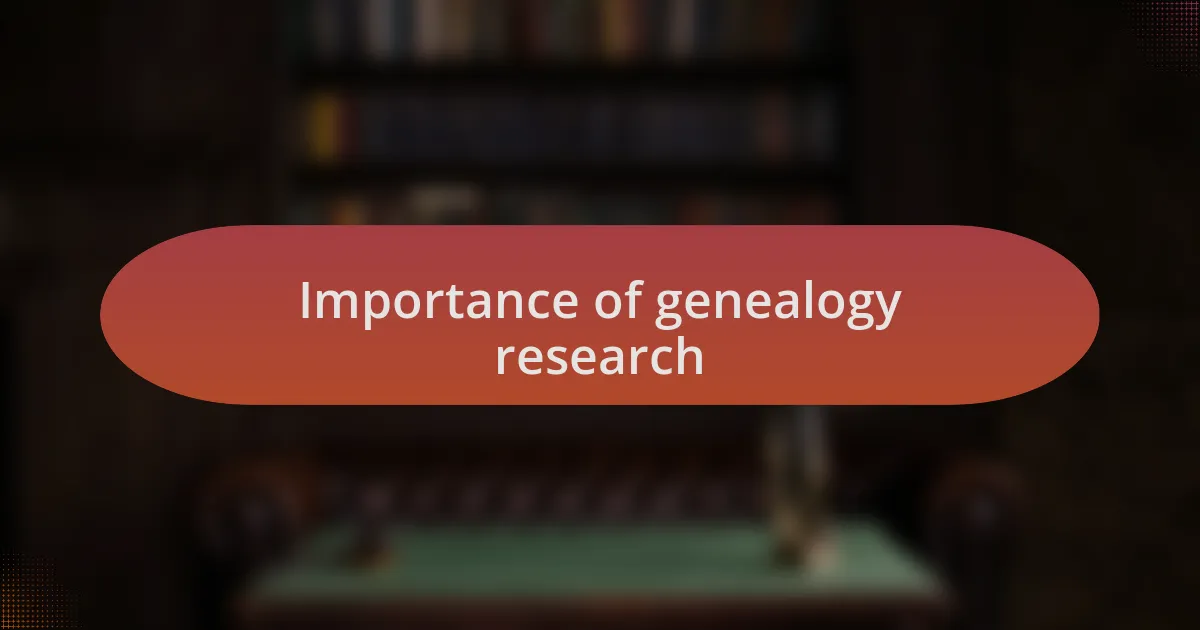
Importance of genealogy research
Researching genealogy is vital for connecting with our roots and understanding the context of our family history. One afternoon, while sifting through old family records, I found a letter that my great-grandfather wrote during his immigration journey. That simple piece of paper turned out to be a window into the hopes and dreams of my ancestors, igniting my passion for uncovering more about where I come from.
It’s fascinating how genealogy research can reshape family dynamics. I remember sitting down with relatives to share what I had discovered. The stories that emerged from those discussions bridged generations, creating a sense of unity. Have you ever experienced that moment when family secrets unfold, leading to an unexpected understanding of your shared history?
Moreover, this journey often helps to clarify misconceptions that can linger in families for years. In my case, I learned that a family tale I had always believed was a myth had a kernel of truth. It made me realize how powerful our narratives can be, and how diving into genealogy can help reclaim and redefine our shared identity. What hidden truths might lie in your family’s past?
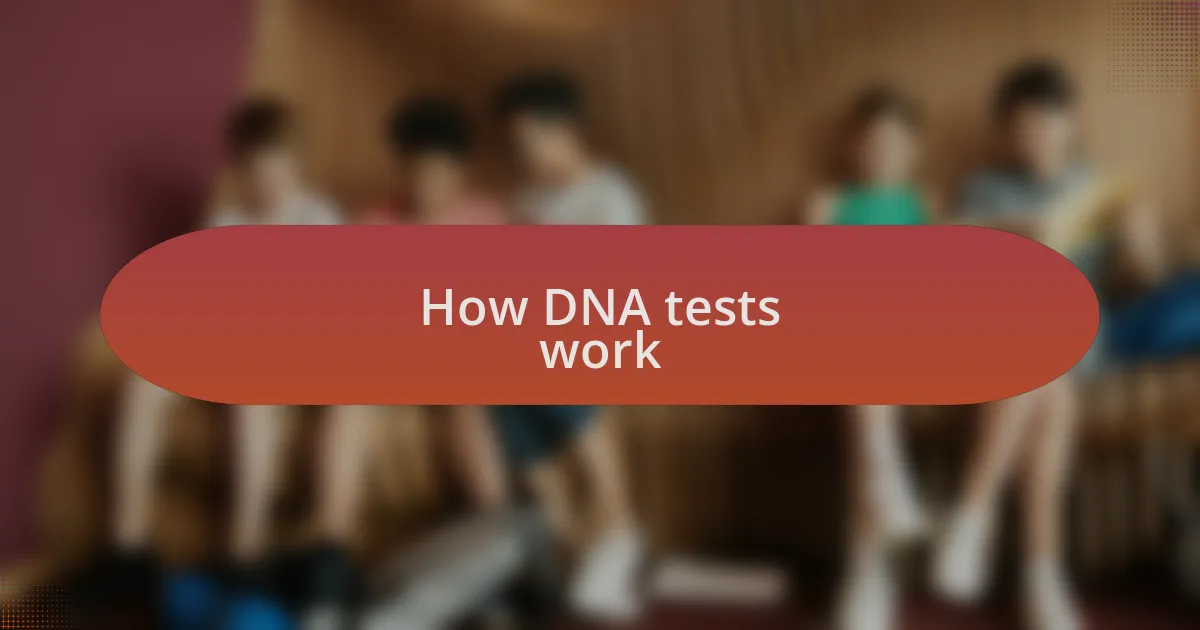
How DNA tests work
DNA tests analyze our genetic material to uncover insights about our ancestry and ethnic backgrounds. When I first took a DNA test, I was curious about my heritage, but I had no idea how deeply it would influence my understanding of family connections. Seeing those percentages of ethnic origins was like holding a mirror to my identity, revealing a tapestry of cultures that I never fully appreciated before.
The process involves collecting a sample, usually through saliva or a cheek swab, which is then sent to a lab. I remember the anticipation as I mailed off my sample, eagerly awaiting results that felt both personal and profound. Every time I checked for updates, it was like waiting for a birthday surprise; the excitement was palpable, knowing my family story was about to be enriched.
After the analysis, the results provide a detailed breakdown of genetic matches and ancestral regions, connecting you to distant relatives you may not even know. I was amazed when one of my matches turned out to be a cousin I had never met; this revelation sparked countless conversations with my family about long-lost relatives. How many stories do you think are hidden in your DNA, waiting to be shared?
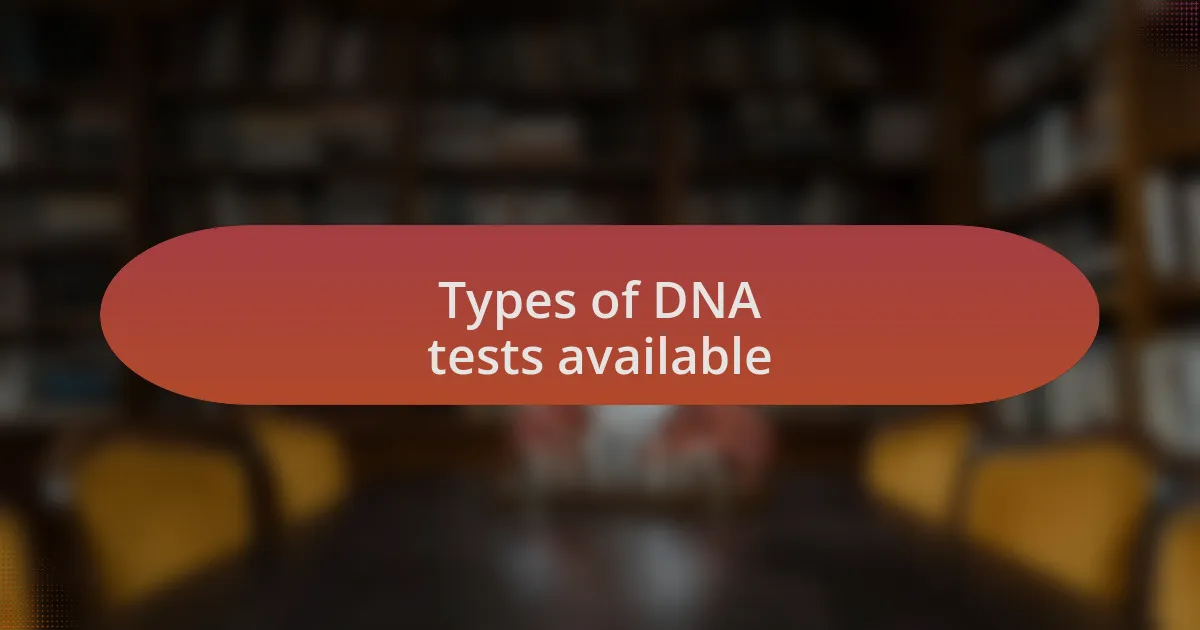
Types of DNA tests available
When exploring the types of DNA tests available, it’s important to understand the three main categories: autosomal, mitochondrial, and Y-DNA tests. Autosomal tests analyze the 22 pairs of chromosomes we inherit from both parents, providing a broad view of our ancestry. When I received my autosomal results, I was struck by how it connected me to branches of my family tree I had never even considered before.
Mitochondrial DNA tests focus solely on the maternal lineage, tracing a person’s ancestry through their mother’s side. This type of test can be particularly enlightening for those seeking to understand their maternal roots. I remember reflecting on my grandmother’s stories about her childhood, and how much more vivid those memories became when linked to my mitochondrial results. It felt like piecing together a long-lost puzzle.
Conversely, Y-DNA tests are exclusive to males, analyzing the Y chromosome passed from father to son. This test is useful for exploring paternal ancestry and can reveal ancient family connections. I was intrigued to learn about the historical migration patterns of my paternal line, which sparked discussions about our shared legacy and how our values have been shaped across generations. How might your own story evolve when you delve into the specifics of your ancestry?
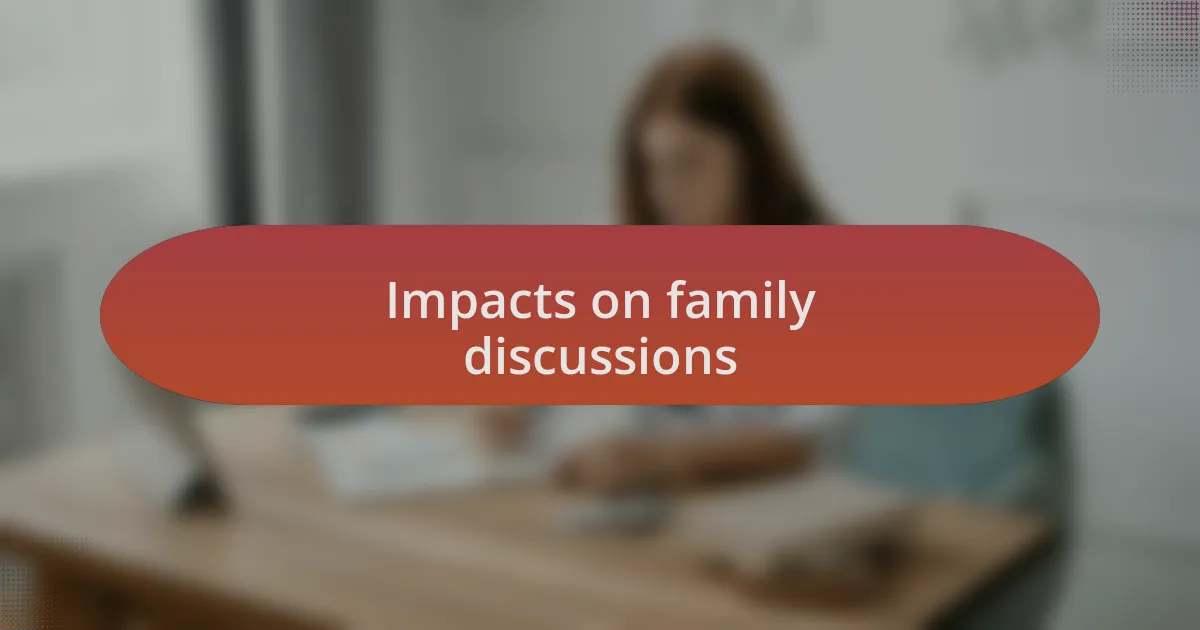
Impacts on family discussions
Discovering my DNA results opened up not just personal insights but also dialogues within my family. I remember sitting down with my parents and siblings to unpack the findings together. It was eye-opening to hear each of us share our thoughts; it felt as if we were weaving new threads into our shared narrative.
One surprising moment occurred when my cousin revealed that her ancestry included a different heritage than we had all believed. At that moment, I realized how these discussions can shift our perception of identity and connection. Isn’t it fascinating how a simple test can reveal layers of complexity within what we thought we knew about ourselves?
Each conversation has deepened my appreciation for family history. We began to explore not only our lineage but also the values and stories that shaped who we are today. Have you ever considered how understanding your roots might change the way you view family traditions? For me, it’s like opening a treasure chest full of stories waiting to be shared.
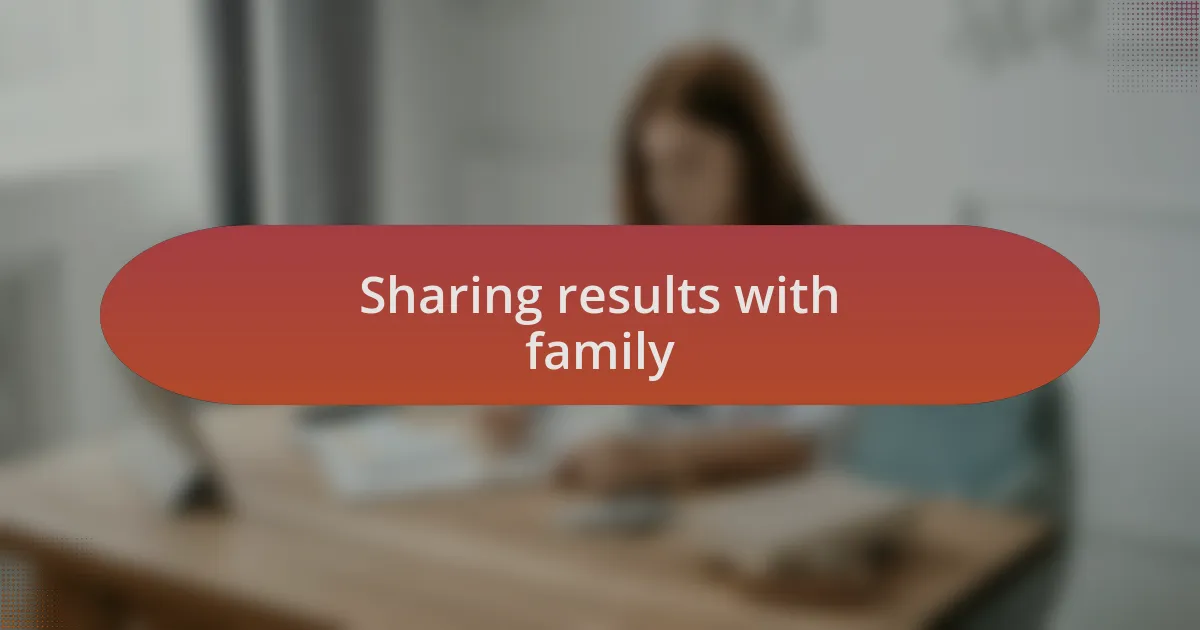
Sharing results with family
When I decided to share my DNA results with my family, I approached it with a mix of excitement and trepidation. The reactions were varied; my grandmother was particularly emotional, recalling stories from her youth that suddenly felt like they held even more significance. Has your family’s history ever surprised you? I found it incredible how a mere chart of percentages could spark a range of feelings and memories, connecting us all a little more deeply.
During one dinner, as we discussed our unexpected ethnic backgrounds, my uncle shared a tale of a distant relative who had traveled across continents. His narrative painted a vivid picture of bravery and adventure, reminding me that finding out who we are is often intertwined with understanding where we come from. Isn’t it amazing how conversations like these can transform the way we view our family’s legacy?
After sharing my results, we also opened the door to dive into all sorts of family stories. One night, my sister and I spent hours sifting through old photographs and documents that had been collecting dust. I felt a sense of unity and purpose in those moments, as if we were not just relatives, but collaborators in uncovering our shared history. Have you ever experienced that feeling of camaraderie while exploring your ancestry? For me, it was a bond forged through the shared joy of discovery.

Navigating sensitive topics
Discussing sensitive topics within families can sometimes feel like walking a tightrope, especially when DNA tests reveal surprises. I remember a particular moment when my cousin uncovered a branch of our family tree that led to unexpected connections, including distant relatives we had never heard of. The room went silent for a moment, filled with a mix of curiosity and apprehension. How do you even begin to address newfound family ties that could shift your understanding of who you thought you were?
In instances like these, it’s essential to approach the conversation with empathy and understanding. When I discussed some unexpected results with my mother, I could see the wheels turning in her mind as she processed the implications. It became clear that this was not just about sharing facts; it was an emotional journey that required patience and sensitivity. Have you ever noticed how deeply our identities are tied to family narratives, and how jarring it can feel when those narratives change?
Creating a safe space for these discussions is vital. I often found myself validating my family’s feelings, acknowledging the surprise, confusion, or even sadness that might arise. During one of these heart-to-heart discussions, my aunt shared her fears about losing the foundation of our family story, even as we uncovered new layers. It reinforced for me how important it is to remind each other that, regardless of the data, we remain connected through love and shared experiences. Isn’t this what makes our family journeys so intricately beautiful?